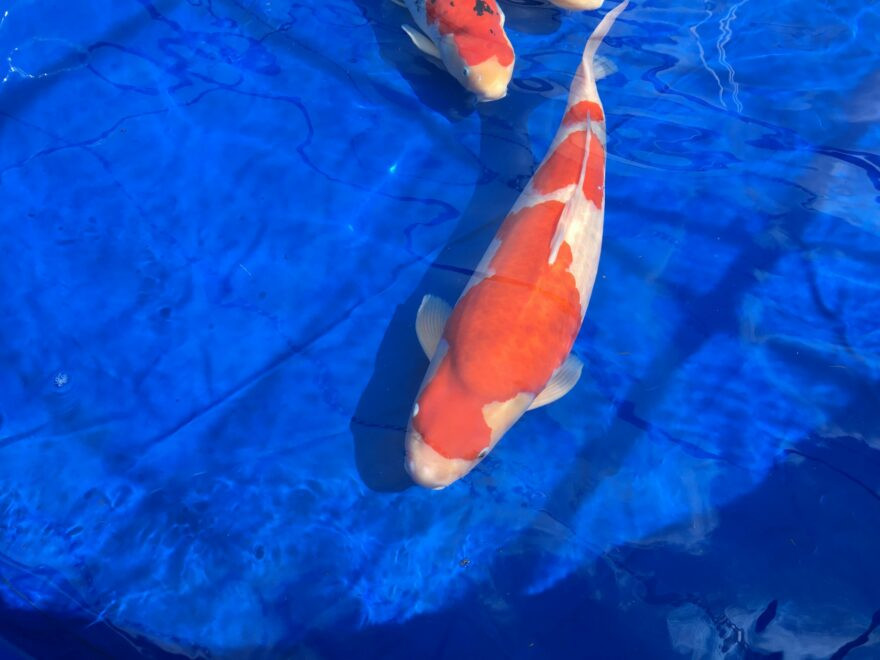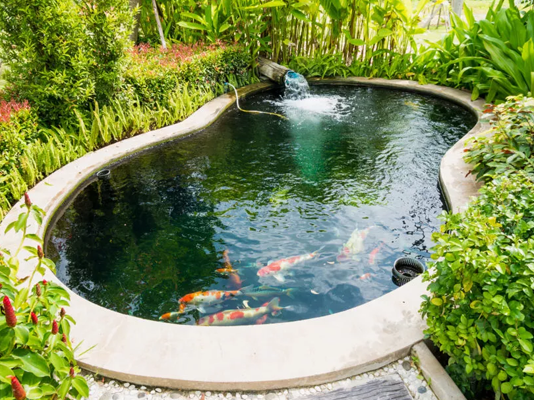Ultimate pond project!
Okay, you’ve got some time at home and you need something to do. Something to keep your mind occupied. Something to keep you exercised. It's time for that big pond project! Now you really do have the time to create the pond you always wanted, but it’s all about the planning. Let’s begin.
Placement
There are two trains of thought regarding pond placement. The first is that, if building a ground level, natural pond, it should be at the lowest point in the garden, where water would naturally collect.
If its a wildlife pond you want and that lowest point is at the bottom of the garden, that’s a good place to put it. Next to a veg patch is even better as frogs, toads and newts will aid natural pest control, and the further away from the noise, the dog, the lawnmower and everything else the better.
But if its an ornamental fish pond you want to build, with fish being the sold focus, its best to have it close to the house. Place the pond near to the house and you’ll be able to see the fish even when inside. Pumps need electricity so its cheaper and easier to run outdoor electricals within a few metres of the main household electrical supply than it will be to run armoured cable all the way down the garden.
And if your main socialising area is patio or decking next to the house, and next to the proposed pond then so much the better, as then you’ll be able to sit out in the summer, watch the fish and have a barbecue at the same time.
Size
Go as large as you can, as even a 6x4’/180x120cm pond will look tiny once in place and planted. Sketch an aerial view of your garden on some paper and if you know its dimensions, draw it roughly to scale. Work out where it could go, and if you would need to move anything because now’s the time to get something like a shed or greenhouse moved.
Go outside and lay down markers or use garden hose laid down to the rough shape and dimensions. Discuss it with your family so you all agree. The last thing you need is a row about the size or placement of the pond once it's been built.
If you want fish in the pond it needs to be minimum 2’/60cm at its deepest point. Koi really need 4’/120cm water depth. Building a raised pond to four feet deep is straight forward, but will it then be too high to view comfortably when sitting down?
If you intend on going four feet down into the ground the pond may need a concrete collar to stop of the sides falling in as you dig it. Think of your own safety while digging a deep hole, and your back. Every thousand litres of pond volume will equate to 1000 litres (one ton,) of mud and clay to remove.
Can you really dig that much earth on your own? A mini digger may not be a hire option in Coronavirus shutdown? And where will you put tons of soil? Creating a rockery and watercourse at the side of the pond is a good idea, but even then it may not need four tons of soil (4000 litre pond,) to create it.
A good compromise for large fish ponds is to dig two feet down and raise the pond up two to two and a half feet up. It will enable comfortable sit down viewing, small children are less likely to trip and fall into it, and you won’t have to do so much digging.
Livestock
What are you going to keep in it? A few goldfish, strictly British native wildlife, your dream of high- quality Japanese Koi, or a mixture of all three? If you do fish you’ll need a pump, filter and UV to add to the budget, so that it clears the water and breaks down the fish waste. If you are building specifically for koi you’ll need a pond filter that’s built specifically for the job of dealing with such large fish and their waste.
And you’ll need to make your pond predator-proof if you don’t want the Heron making off with your prized fish.

Document it
Everyone’s a content producer these days, and others will crave pictures and video of your pond build. If you have one, set up a GoPro on timelapse, or just take shots on your phone of every step of the build from start to finish. You’ll appreciate yourself when looking back at your achievement. You can’t get people round yet but there are lots of people on the internet who will be able to guide you and offer advice.
If you could do it all again!
But speak to experienced pond builders or garden pond owners on their third or fourth pond and there will be lots of advice that you should take heed of:
Go box-welded
If creating a neat, oblong pond consider a box-welded pond liner. It won’t have any creases in it and will look much neater.
Go gravity-fed
If you want to do koi properly go gravity fed, with a bottom drain. You won’t have the pump or pond hose in the pond anymore and it will be easier to neater, more effective, and easier to clean the filter remotely.
Pump to waste
Any backflush or filter clean facility will be much better if connected to a waste pipe that you run to a drain. You won’t have to flood your garden every time you do a water change or filter clean
Fit an auto top-up
Connect a mains water feed to a ball cock that will top-up the pond every time it evaporates or you change the water. Use an inline dechlorinator for chlorine-free water every time.
Get the electrics right
Use switch boxes and RCDs to neatly and safely connect your pump, airpump, lights and UV. They will be controllable at the flick of a switch (good for maintenance,) and better still combine filter and electricals in a clean, dry filter house.









